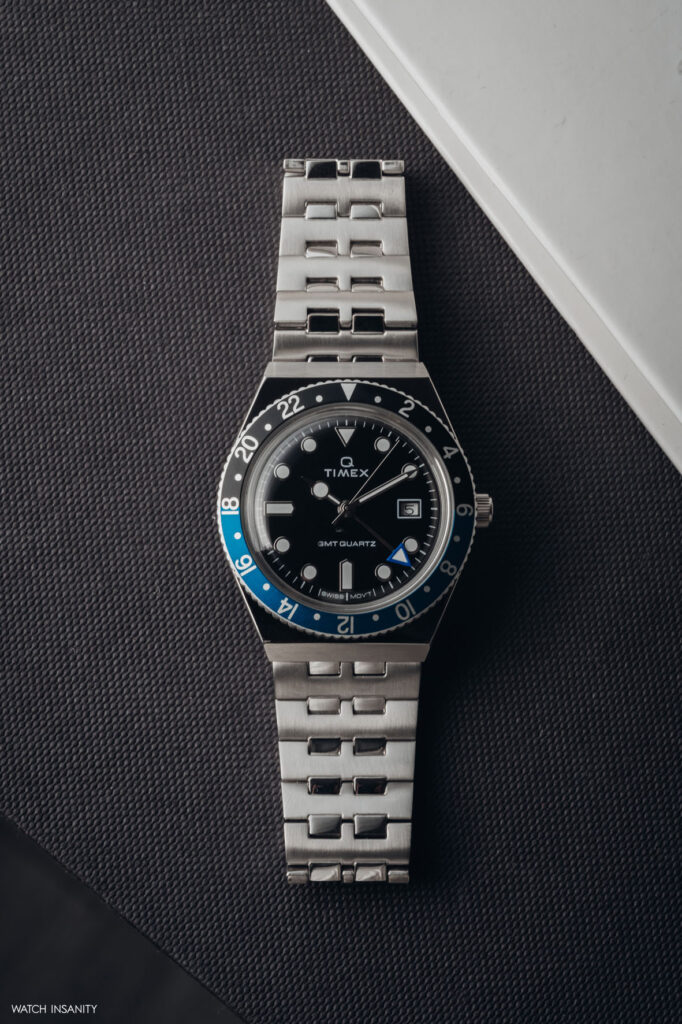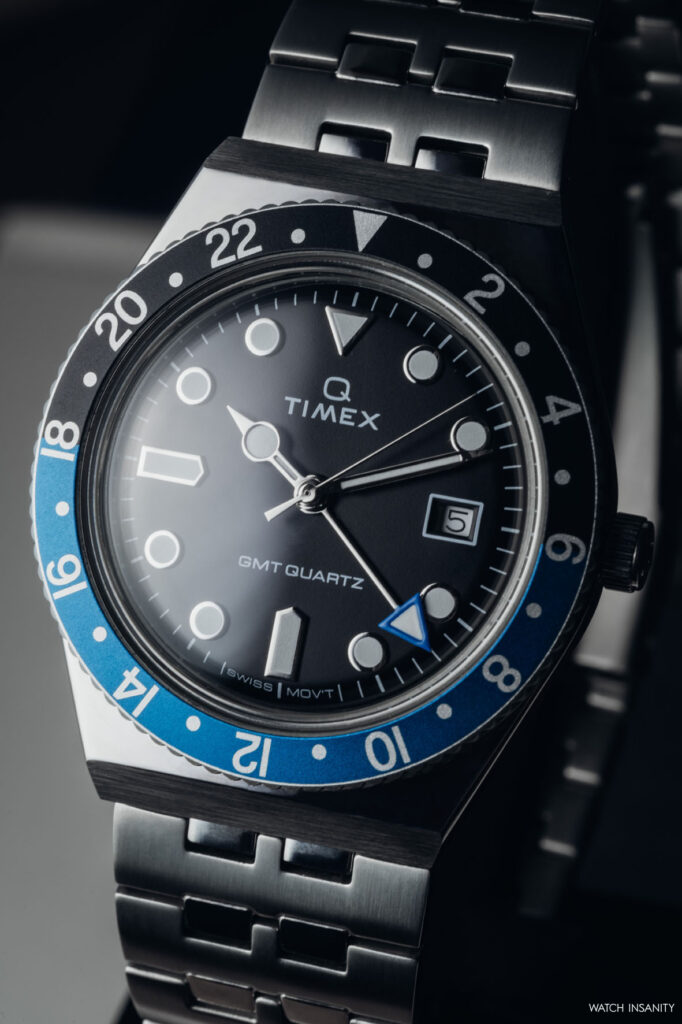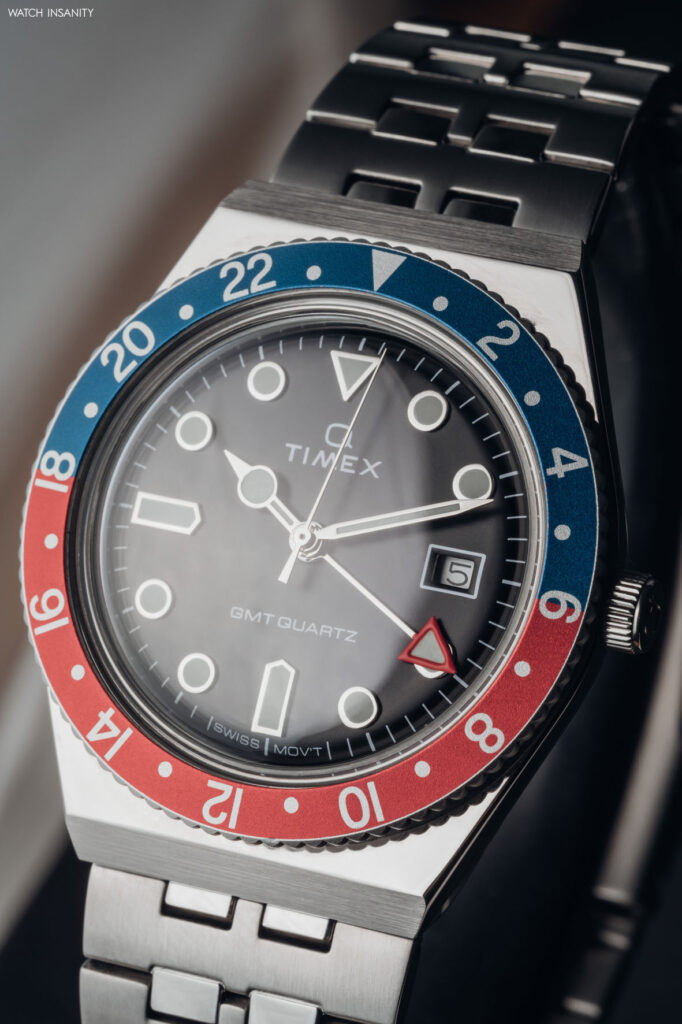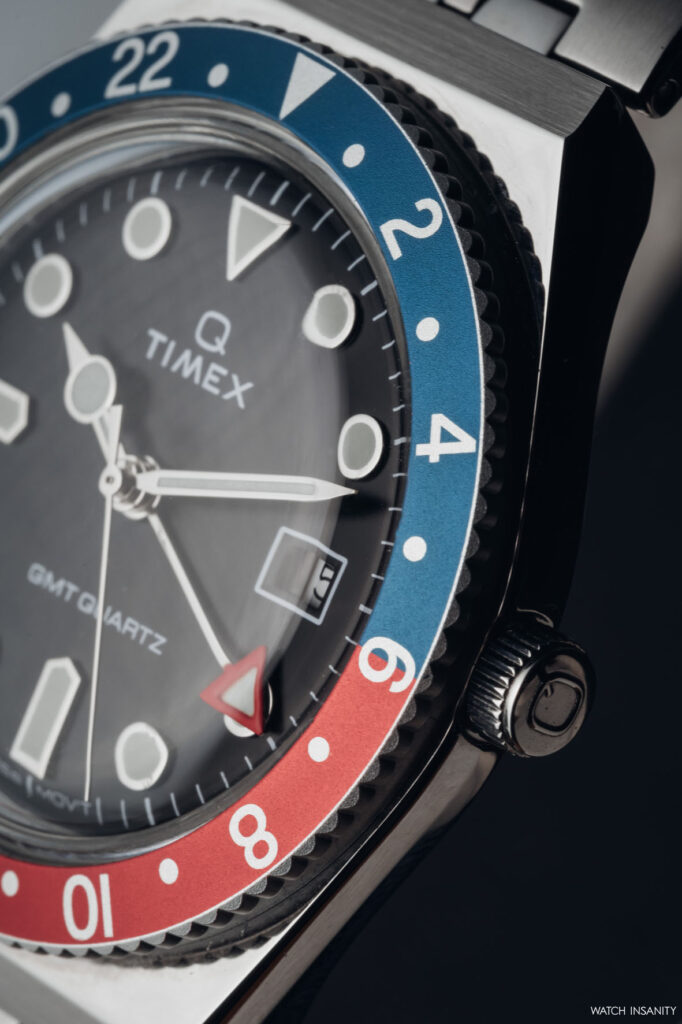Q Timex Diver GMT: The Icon Is Back
17 November 2022Call them whatever you like – reissues, homage, tribute – but the essence doesn’t change. When a brand re-launches watches that have been a success in its history, something good often happens. As in the case of Timex, which recently relaunched the Q Timex Diver, enriching it with the GMT function. A piece that is the perfect synthesis of the American brand’s DNA: a well-made, reliable watch with an affordable price. A blend coming from afar.
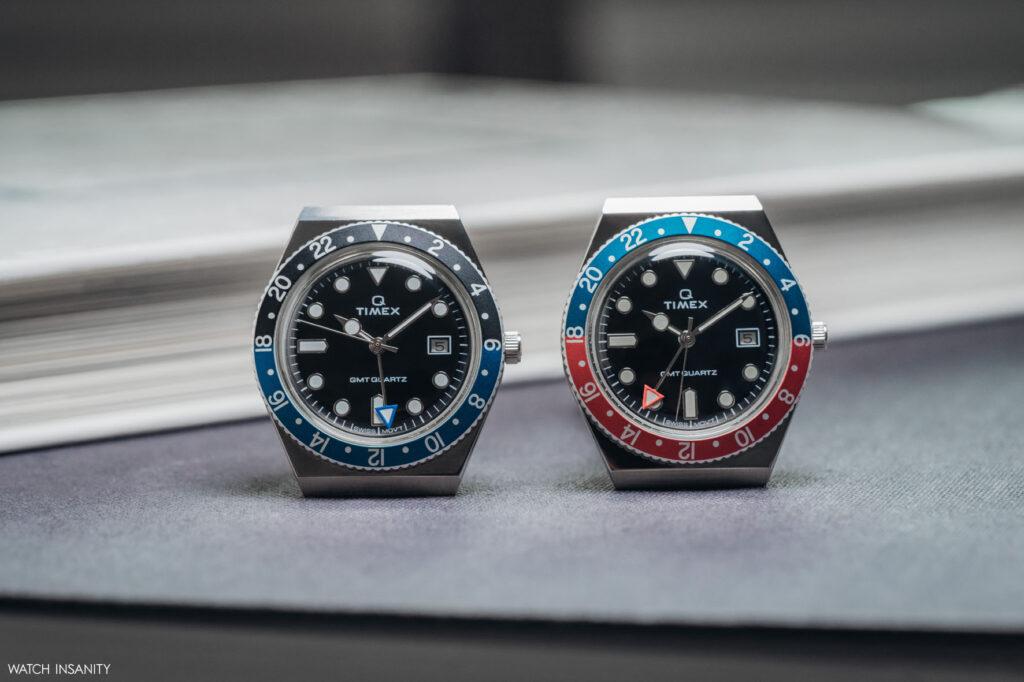
IT’S TIMEX’S DNA
Since its founding as the Waterbury Clock Company in 1854, Timex has had the goal of creating watches combining precision and robustness, and that could be bought by most people. A trademark that the company has always embodied, and, when facing the so-called quartz crisis in the 1970s, its engineers found a way to adapt to the advancing technology.
A new, revolutionary technology that progressively gained market share to the disadvantage of traditional mechanical watchmaking. Timex soon sensed the potential, and entered this market in 1970; the brand highlighted its technological identity by proudly affixing a beautiful “Q” made of quartz on the dial.
The Q collection by Timex has been declined, over the years, in different styles, through which the brand has also given interesting interpretations of the quartz movement. Just think of the 36 mm model, with its quartz-based spiral caliber, confirming that the American brand has continued to invest in research and development even in difficult years.
Q TIMEX DIVER: NOW AS THEN
Coming to the Q Timex Diver watch, which inspired the protagonist of our shooting, it was released in 1979, almost 45 years ago. Years that don’t seem to have passed, if you look at the contemporary reissue; it is a faithful reproduction of the original model, including the stylish details that refer to the 1970s and which, at the time, made the watch a symbol and a must have.
Starting with the 38 mm steel case, which is the same size as the 1979 watch. In this case, Timex didn’t adapt the size to a more contemporary taste, which on these kind of watches calls for masculine cases, around 41-42 mm (except for the recent downsizing trend, which, however, we won’t go into here). They chose to remain on the lines of the 70s. Not to mention the fact that this size can also appeal to the tastes of women.
The case’s tonneau shape, softened by the round bezel, also harks back to those years. Its processing is anything but trivial; the upper part has a brushed surface, while the sides are characterized by a double glossy finish that lightens its presence and makes it captivating.
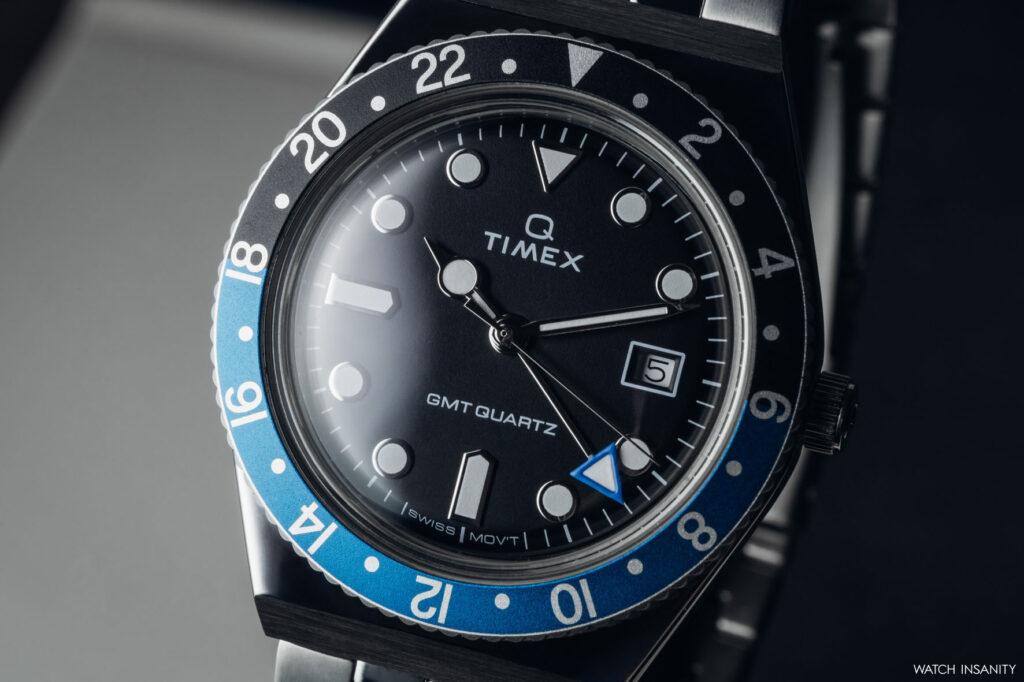
The design of the 70s is also found in the clear shape of the lugs, fixed to a steel bracelet which could only be integrated. An homage to the aesthetics of that period inaugurated by Audemars Piguet’s Royal Oak, which has been an inspiration for several models that followed, especially among top brands. The brushed finish of the bracelet makes it more harmonious with the case.
It is not just a simple detail, mind you. Often the quality of a watch is judged by the attention that the brand dedicates to the processing of the bracelet. The risk of creating something cheap, thinking that what matters are only the dial and the case, is often just around the corner. In this case, Timex did not fall into the trap: the finish and the bracelet’s soft fit greatly increase the perceived quality of the whole watch.
THE BEZEL AS A DISTINCTION
The most noticeable feature of the Q Timex Diver is the 12-hour bezel, available in both the red and blue “Pepsi” version and the blue and black “Batman” version. Hopefully Timex won’t blame us for this, as these denominations taken from the Rolex world are the ones that set the standard. And from which this differs for several reasons.
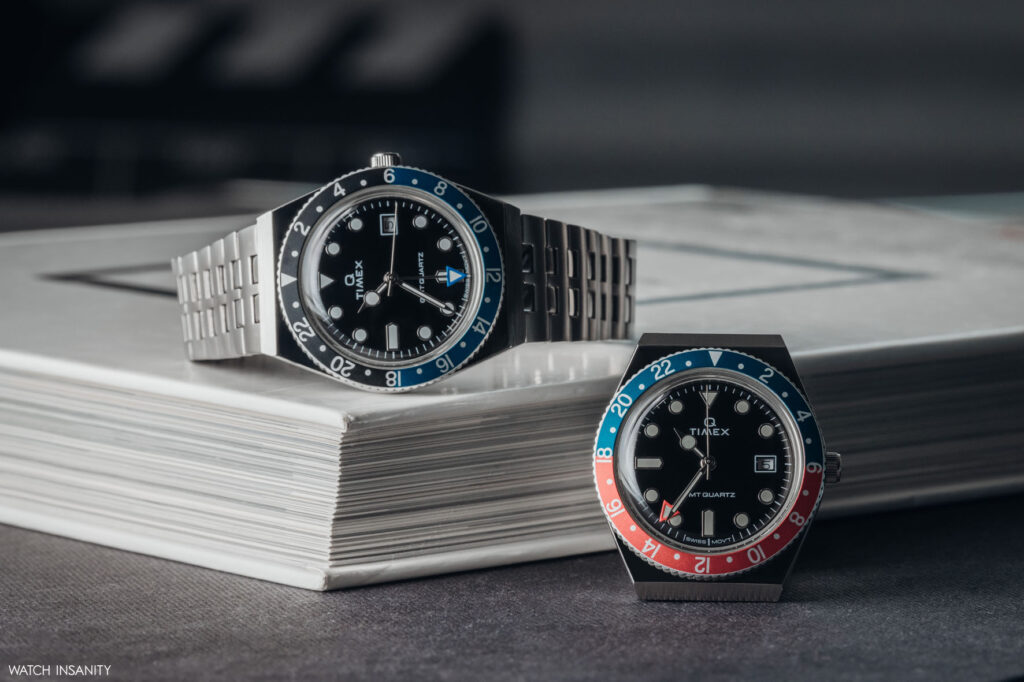
For now, the rotation flow. Instead of the classic 120 or 60 click bezels, that of the new Q Timex Diver is driven by friction and bi-directional. Once unlocked it has a smooth and delicate movement, thanks also to the anodized aluminum base that helps the fluidity of the sliding.
The two-color configurations give the watch a strong character, together with the indices and hands that are clearly visible in any situation. Let’s not forget that the watch, although waterproof up to 5 bar, is intended to be a diver – therefore, legibility is an essential feature. In this sense, the attention the designers dedicated to the second time zone hand is noteworthy: its outline is red or blue depending on the color of the bezel. Speaking of details that make a difference…
BELOW AND ABOVE
The caseback is also beautifully brushed. It simply bears the information about the model and its origin, and is fixed to the case by four screws. The small round door inside which the battery is encased can be opened with a screwdriver or a small coin (very common operation for those who, born in the 70s like me, have always had to do with quartz watches), allowing the battery to be replaced without the help of a watchmaker.
Another feature that brings the Q Timex Diver GMT straight back to the 70s is the domed acrylic crystal that protrudes 2.7mm above the bezel, so quite thin, as it stands at around 12mm. Unlike the 1979 model, which was not a GMT and was a day date, Timex here chose to keep the single date window, with only the day of the month.
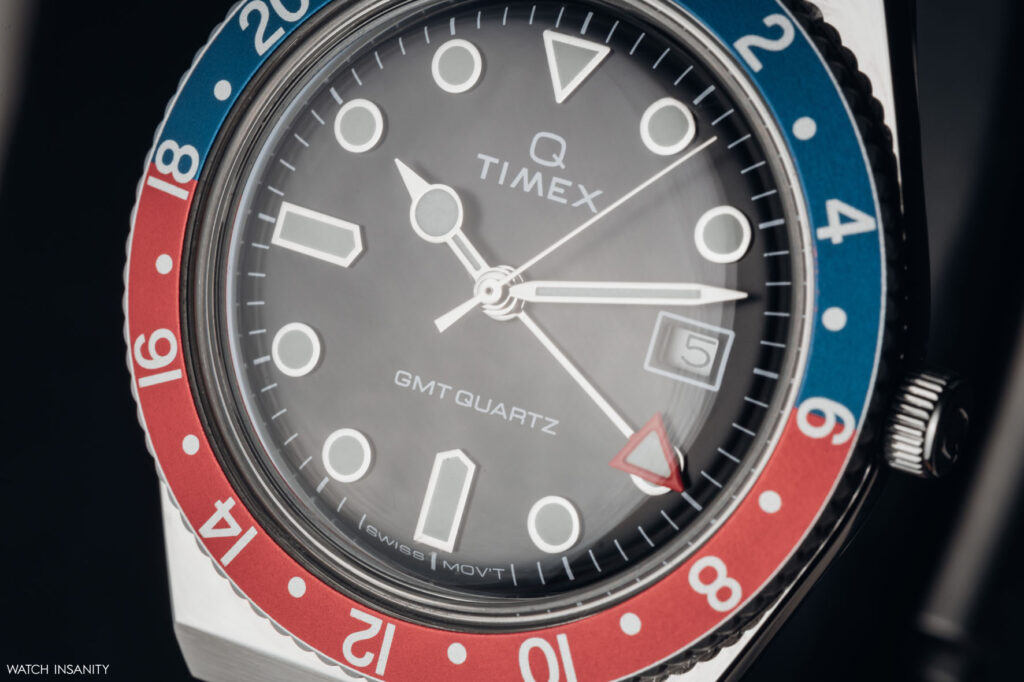
Q TIMEX DIVER GMT? INSPIRED
This watch, of course, is equipped with a high-performance quartz movement. Timex did a great job crafting a piece exactly embodying its DNA. Quartz guarantees reliability and precision, the workmanship is accurate to detail and carefully executed, the fit is perfect, and the inspiration to the original model, almost philological.
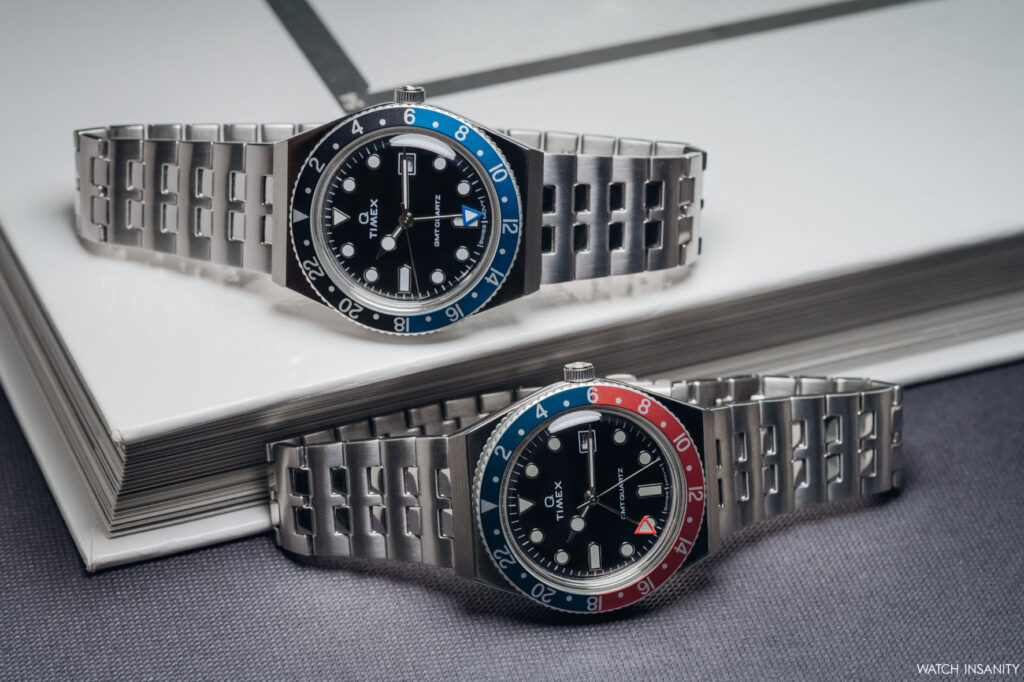
All this while remaining in a more-than-accessible price range, as in the pure brand tradition. Both references are sold for € 219, a price largely in line with what the enthusiasts expect from the brand. A full-blown warning to the many competitors in this price segment: the Timex icon is back, it’s terribly serious.
By Davide Passoni


